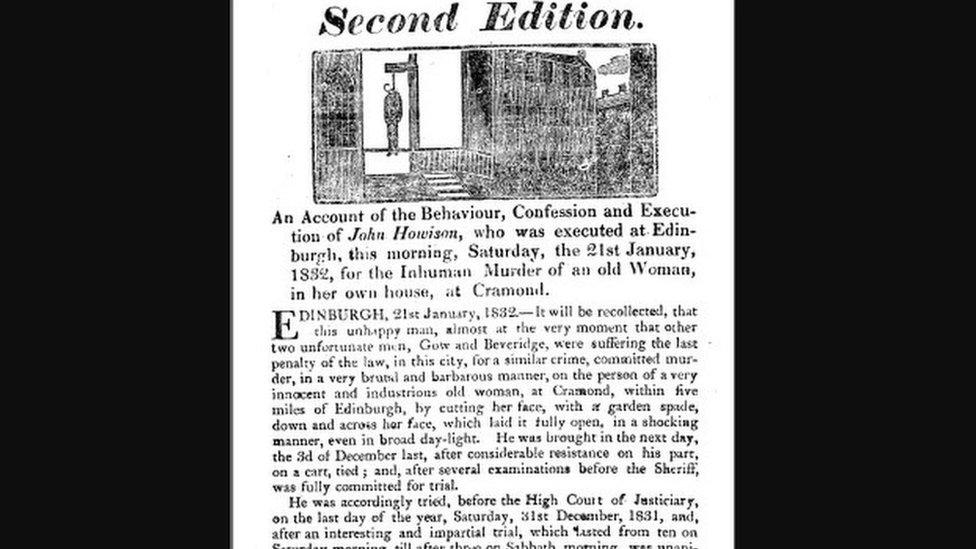Putting a face to the Cramond murderer in Edinburgh
- Published

A 19th century Edinburgh murderer who killed a widow with a garden spade has been unmasked using special forensic techniques - nearly two centuries after he was hanged.
The face of John Howison has been forensically reconstructed for a new exhibition in Cramond where the murder took place.
He killed local woman, Marta Geddes, on 21 January 1832.
His body was the last sent to Edinburgh University's medical school by court.
The life-like profile of the killer is on show next to a replica of his skull in a free display at Cramond's Maltings Interpretation Centre.

Ian Campbell, Edinburgh's depute culture and communities convener, said: "Edinburgh's history never fails to amaze, shock and, in this case - scare.
"By putting a face to the Cramond murderer, we have been able to piece together the story of the man behind the crimes.
"The project has combined the council's archaeological findings with forensic techniques; Edinburgh University's scientific research and remains, and the brilliant local knowledge of the Cramond Heritage Trust.
"It is fantastic to see the city collaborate and the result is a fascinating new display in the heart of the Cramond community."
John Dods from the Cramond Heritage Trust, said: "Cramond may be a small district but its history packs more incredible events and findings than many parts of Edinburgh.
"The trial of John Howison is one of the area's lesser known tales, but it was an important event in scientific history.
"I hope our display at the Maltings educates and provides visitors with an insight into Cramond's colourful and sometimes unsavoury past."
'Especially captivating'
As the capital's last criminal to be dissected before the Anatomy Act of 1832 abolished the practice, Howison is in Edinburgh University's anatomical museum.
His articulated skeleton is still displayed next to the remains of William Burke.
Dr Janet Philp, of Edinburgh University's deanery of biomedical sciences, said: "It's fascinating to be able to link the Anatomical Museum to local stories, which in turn enables our history to become increasingly accessible to others.
"A reconstruction like this, even with a measure of artistic license, helps us to increasingly appreciate and understand our museum collection and the significant role it has played in our city's history."
John Lawson, City of Edinburgh Council archaeologist, said: "This has been a rare opportunity to put a face to one of Edinburgh's lesser-known perpetrators.
"We often focus on the history of the city centre, but our communities are just as interesting.
"The story of John Howison, the Cramond murderer, is especially captivating."